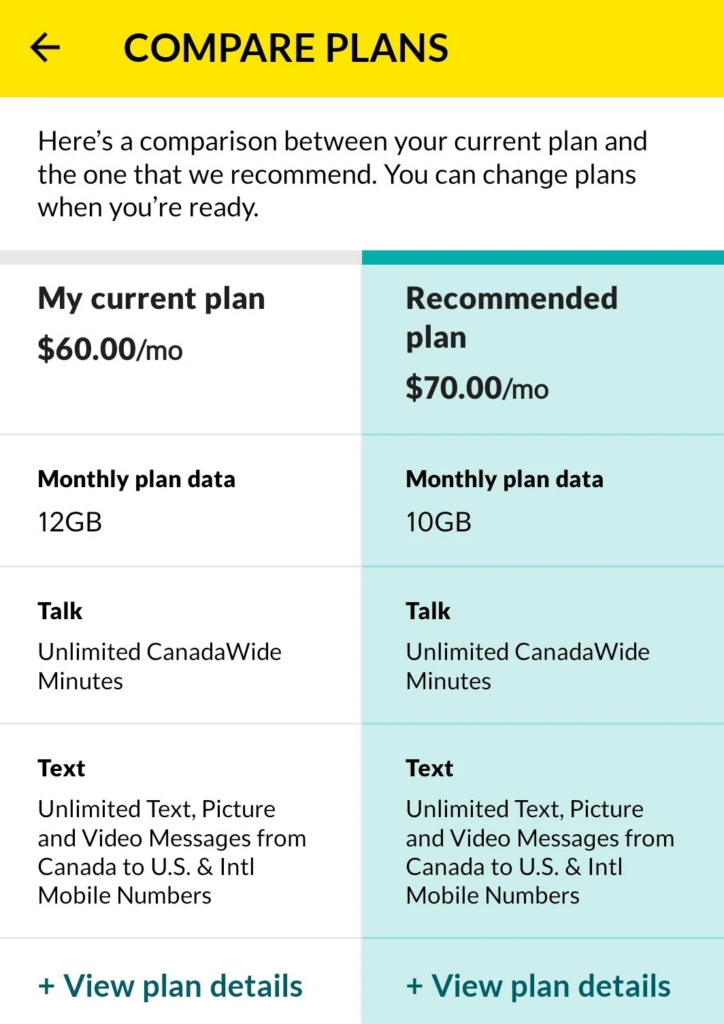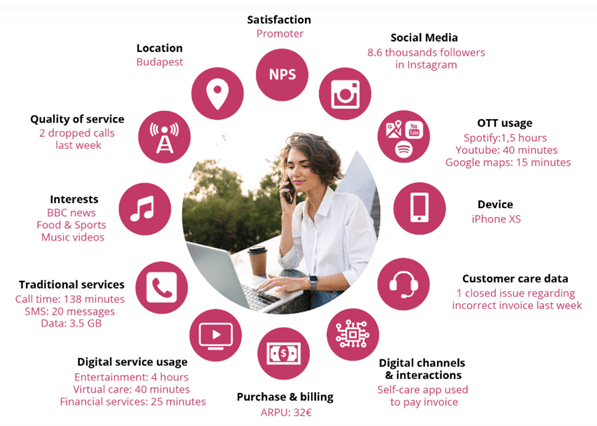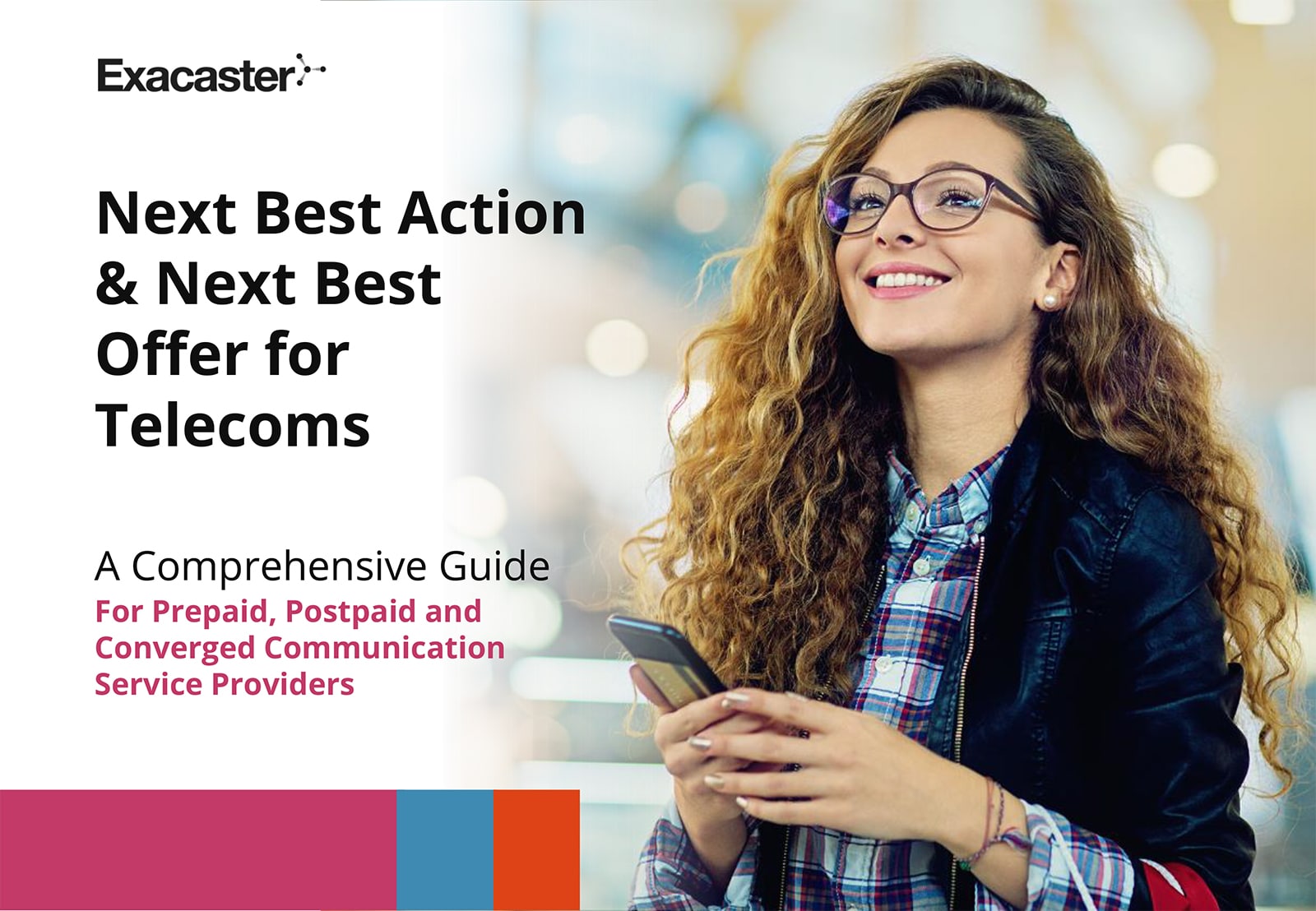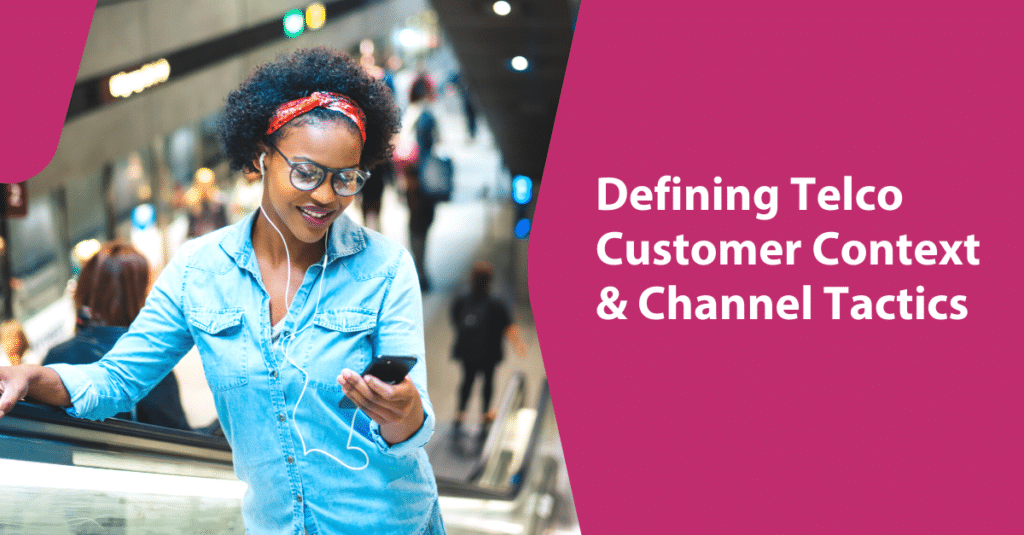In our age of increased communication channels and always-on culture, consumers are targeted at all times by traditional and digital media. In this stream of endless communication, we receive too many irrelevant offers (we call them “bad offers”).
Bad offers might even go beyond irrelevant to be hostile. In general, bad offers have one or more of the following problems:
- They do not address a customer need.
- They are too expensive for the provided value.
- They are offered at the wrong time.
Recently a colleague of mine shared an example of a bad-hostile offer. It all started with a user complaint on Reddit about receiving an offer to get a lower data allowance for a higher price from a Canadian mobile operator:
 The message triggered a wave of negative comments with topics ranging from conspiracy theories about an evil operator tricking clients to casting blame about being ignorant about client needs to a mistake made by incompetent staff. Users also shared stories about how they withstood bad offers from their operators, and some even shared a step-by-step manual on how to avoid the operator’s tricks. In the end, the operator became a common enemy.
The message triggered a wave of negative comments with topics ranging from conspiracy theories about an evil operator tricking clients to casting blame about being ignorant about client needs to a mistake made by incompetent staff. Users also shared stories about how they withstood bad offers from their operators, and some even shared a step-by-step manual on how to avoid the operator’s tricks. In the end, the operator became a common enemy.
Considering how fast and far this message travelled we can imagine the amount of damage it caused for the operator.
You might think this was just a one-time mistake. Actually, it’s just the tip of the iceberg of all the irrelevant offers out there. Ever get one of these bad offers?
- Upgrade a phone just after you got a new one.
- Buy more GB when you are using only 30% of your current plan.
- Buy a TV service after you’ve refused 5 times already and nothing changed.
So, why do operators keep extending bad offers to their customers? Sadly, they usually don’t even know they’re doing it. Here are some of the main reasons bad offers exist.
Product focused offer catalogue optimization
Some operators might decide to optimize their offer catalogue to reduce maintenance and Business support system (BSS) load or to simplify pricing by reducing the number of offers. These actions help because reducing BSS complexity potentially reduces the cost of service, decreases the cost for the customer, and makes it easier for the customer to choose the right price plan.
The problem appears when those changes are rolled out too quickly leading to customers getting caught between offers. This happens especially when there were previously hundreds of offers and promotions, and now there are only a few offers in the new catalogue.
Technological limitations
Some smaller operators have trouble retrieving data about customers, or they lack the technological capability and knowledge to work with the data. This means customer targeting happens manually or semi-manually, and offers are assigned to groups or segments, not individuals. So, it’s not a surprise that some of these “one fits all” offers are bad.
Hangover after giving a crazy deal
In pursuit of revenue, operators might even offer a crazy deal, such as much more data than a client currently uses for a slightly higher price, thus overestimating growth of usage. While this might work in the short run, crazy offers don’t allow for further up-sell later. Additionally, the market price can surge which may force the operator to offer a bad deal during the next contract prolongation.
Poor automation of the offering process
Another mistake in the targeting process is to only consider customer usage when assigning offers. For example, after an offer catalogue changes, if customer usage is low, he/she gets assigned the next closest offer. It sounds crazy, but it’s a common mistake to skip checking the offer against what the client currently has or align offers with other numbers/accounts that belong to the same customer.
To avoid this, make a list of metrics to validate the offer before offering. Core metrics to consider are customer usage, current plan allowance, a distance of new price from the current plan price, price per unit, and so on.
Market changes
Price increases may be driven by changes in the market or other reasons on the operator side, like service improvements, new technology roll-out, or lack of competition. This allows the operator to boost price, but without a formulated value proposition, it might negatively impact customer retention in the long run.
Communication inconsistency
Bad communication is evident when a customer who has more than one mobile service has been offered a deal based on only mobile service information. This service-only oriented process misses more comprehensive customer and household-based targeting.
In order to avoid bad offers, a company should consider a more customer-oriented method. The steps include:
- Getting to know your customers better
- Pro-active management of offer catalogue
- Offer personalization
- Communication consistency
Let’s walk through these steps in detail:
1. Knowing your customers better
To know your client better, collect your data and organize it in a way that enables analysis, exploration, and actions. The more data the better, but be mindful in terms of the cost/time needed to capture, process, and organize your data. Also, focus on your customer and customer base management. Avoid the temptation to solve every data issue with one single project.
An advanced Customer Data Platform automatically calculates and updates customer metrics and organizes them according to data content. It should have built-in connectors to data sources and communication channels to easily upload raw data. Later metrics can be exported to BI tools for:
- Tracking and exploration
- Targeting engines for churn prediction
- Next best offer calculation
- Campaign management communication engines
 Once you have the Customer Data Platform connected to your data sources, you can create derived metrics in addition to the standard ones pictured above. For instance, you might consider tracking the data usage vs. data allowance (data bucket) ratio. This allows you to avoid bad upsell offers for subs who use less than 20-30% of their current plan data bucket and have nothing to gain from the bucket increase. It also helps to understand the speed of usage growth and decide on the most efficient actions, such as further upsell or usage stimulation.
Once you have the Customer Data Platform connected to your data sources, you can create derived metrics in addition to the standard ones pictured above. For instance, you might consider tracking the data usage vs. data allowance (data bucket) ratio. This allows you to avoid bad upsell offers for subs who use less than 20-30% of their current plan data bucket and have nothing to gain from the bucket increase. It also helps to understand the speed of usage growth and decide on the most efficient actions, such as further upsell or usage stimulation.
Check out the Customer Data Platform designed for mobile operators.
2. Pro-actively manage the offer catalogue
After getting to know customers better, it’s crucial to ensure you have relevant offers to provide customers with good deals.
One of the simplest ways to ensure offer relevancy is to constantly check your offer catalogue against offers used by the current customer base. Identify and fill gaps between the two with offers that provide slightly more for a slightly higher price. Also, you’ll want to keep the price per unit lower compared to what the customer currently has.
All this can be achieved by monthly data analysis or with an automated tool, like Exacaster Deal Radar which is part of the Top Performance NBO App.
You can also do the same check against competitors’ offers to make sure your pricing follows company strategy and positioning while staying competitive.
3. Personalize offers
Once the company knows its customers and has a relevant, regularly updated offer catalogue, it’s time to decide what offer will be offered. To ensure maximum relevancy, offers should be assigned based on individual customer characteristics.
Usually, data availability and a number of offers in the offer catalogue strictly limit offer personalization due to privacy requirements and offer catalogue complexity. That’s why it’s important to avoid additional limitations like the lack of analytical technology and targeting know-how.
Companies should also avoid crazy deals – offers that give away too much for the price and then later lead to bad offers. Crazy offers might maximize short-term conversion rates, but can prevent further upsell, depreciate offer value, and even start a market price degradation.
Personalized offer processes are powered by automated algorithms that evaluate customers’ needs and the probability to purchase. Then, the Next Nest Offer (NBO) is chosen to maximize long-term revenue from the customer. The more contextual data about the customer available in the Customer Data Platform and the more flexible and up-to-date the offer catalogue is, the better and more personalized the offers become.
You might want to check out the prebuilt NBO engine tailored for telecoms.
4. Communicate consistently
Poor communication timing, inadequate channel orchestration, unappealing message tone, or poorly formulated value propositions can all lead to a bad offer even after a relevant offer was assigned to the customer.
Best results are achieved when pro-active communication is built around the event and customer interactions, for instance, the invoicing or recharge, contract lifecycle, changes of usage pattern, etc. This maintains communication relevancy and avoids bothersome messages when the customer is busy.
Choosing the right communication channel and the balance between proactive and reactive communication is also important. For example, the company should identify a customer’s ability to use digital channels over more intrusive conventional communication channels like SMS, email, or calls.
Another important element is communication consistency between channels and services. This means having at least the same message and offer in all the available channels for all client services. Meanwhile, the omnichannel experience is much better since interaction starts in one channel and continues on another. For instance, the call center knows what offer was sent to the customer over the SMS. Then, after the call, the customer sees the adjusted offer on self-care.
Bring it all together for them & for your business
Understanding the customer allows you to tailor the message to formulate the most appealing value proposition. It’s a data journey loop that starts by collecting bits and pieces of data to be transformed into structured information. It then identifies client needs, assigns the most relevant offer and communication, then finishes by transforming it back to bits and pieces of information (messages and words) that the customer can understand and trust.
By implementing the strategies in this article, operators maximize the revenue from clients, and clients maximize the value from the operator. Everybody wins.
Meet the author

Martynas Rudokas is Chief Commercial Officer & Client Partner at Exacaster. He brings over 15 yrs of experience in consumer marketing, product management, project management and analytics in telecom and retail industries.
What to read next?

Download NBO & NBA eGuide: A step-by-step framework on how to succeed in your process
- The ins and outs of Next Best Offer & Next Best Action
- 6 steps to successful implementation
- How to build a business case for NBA & NBO





